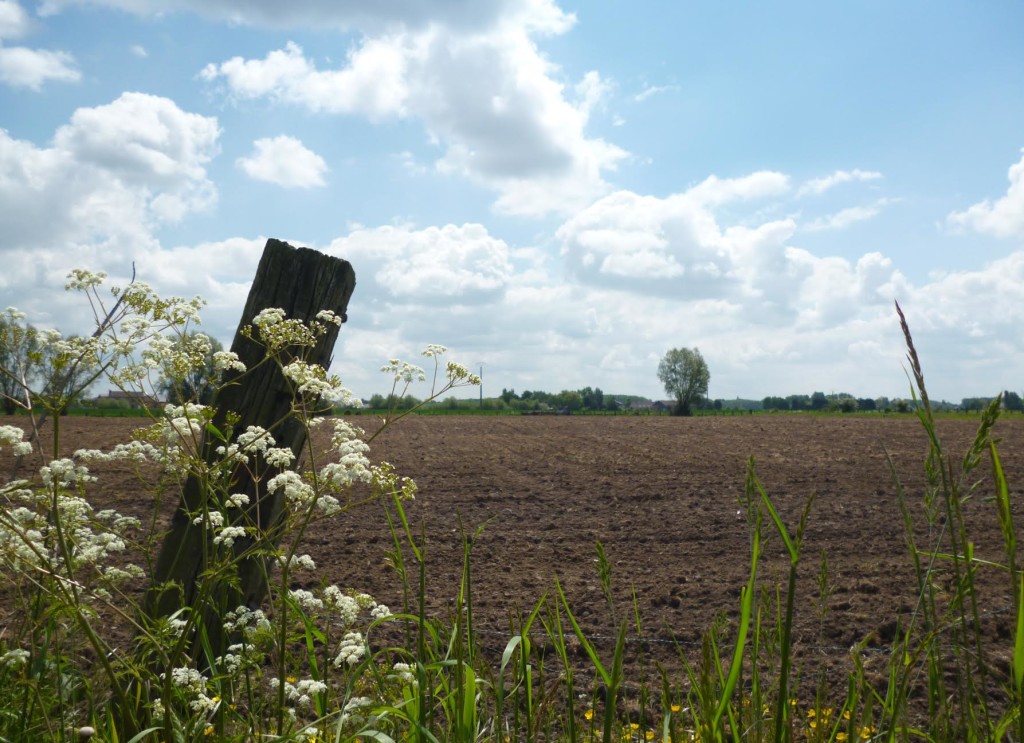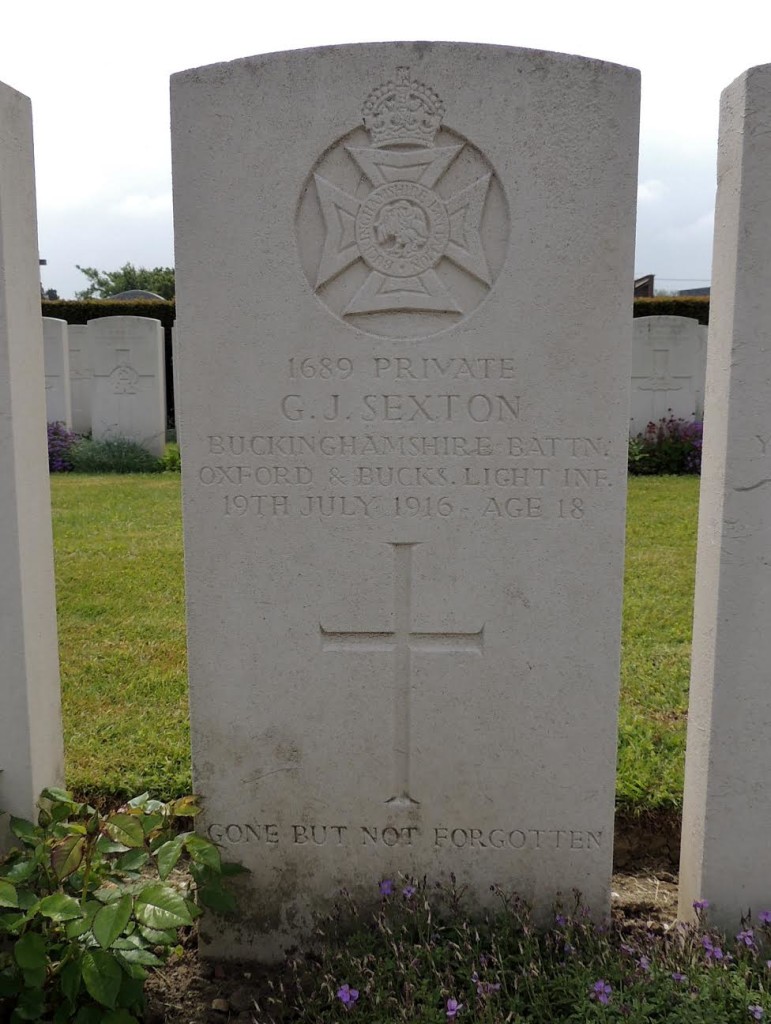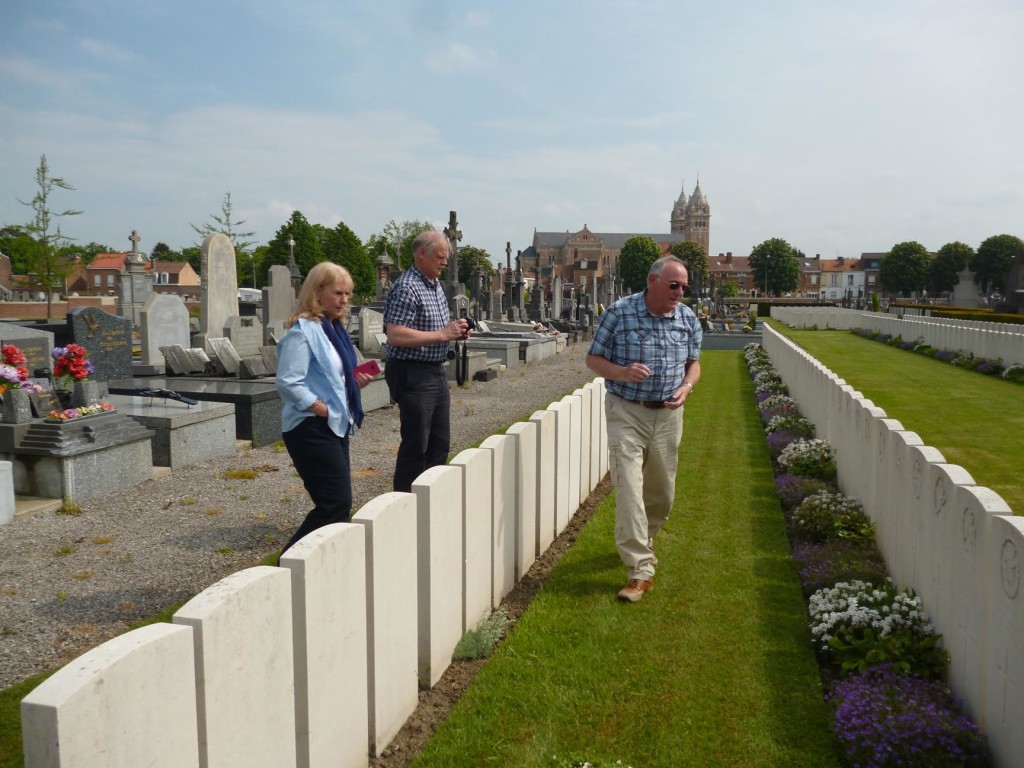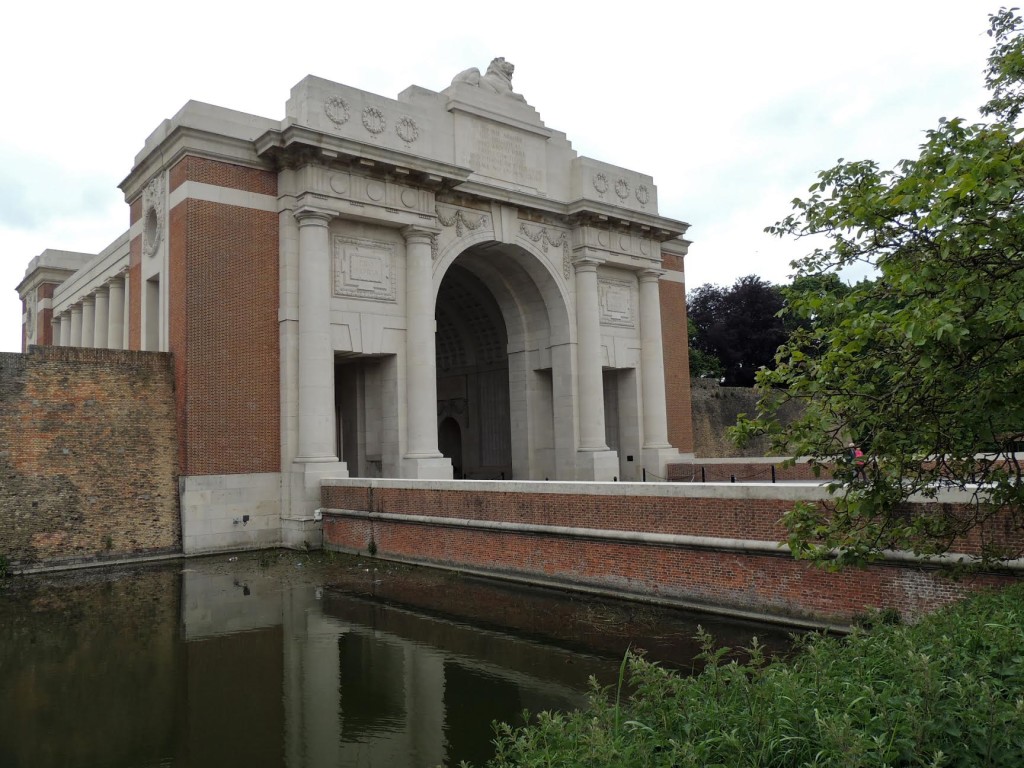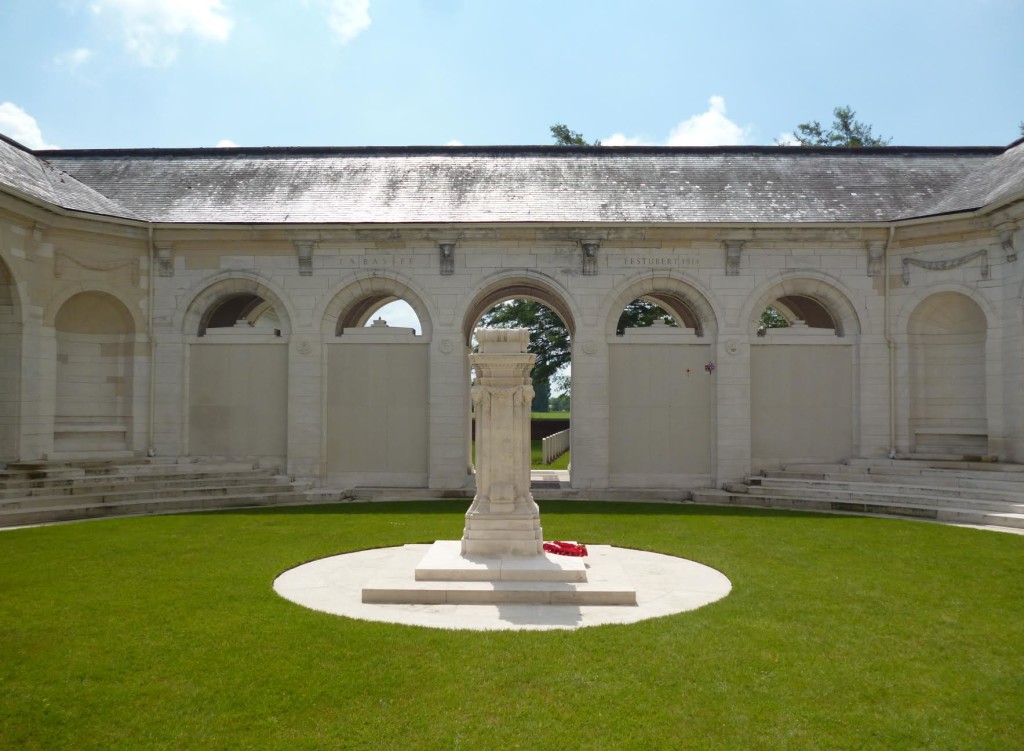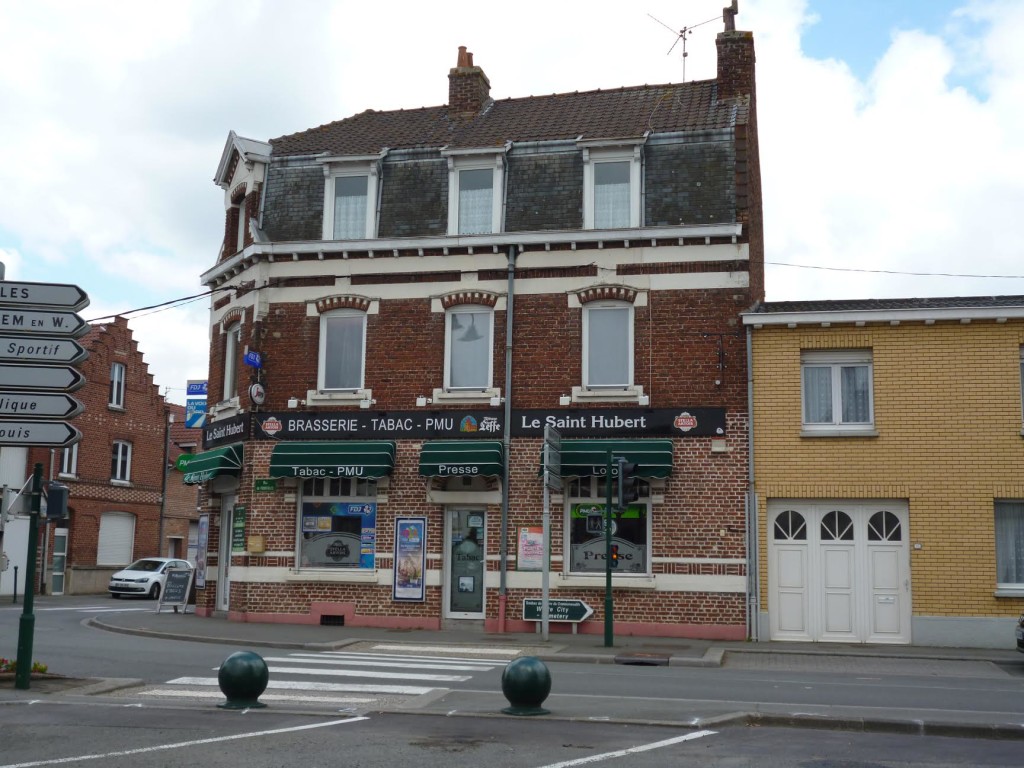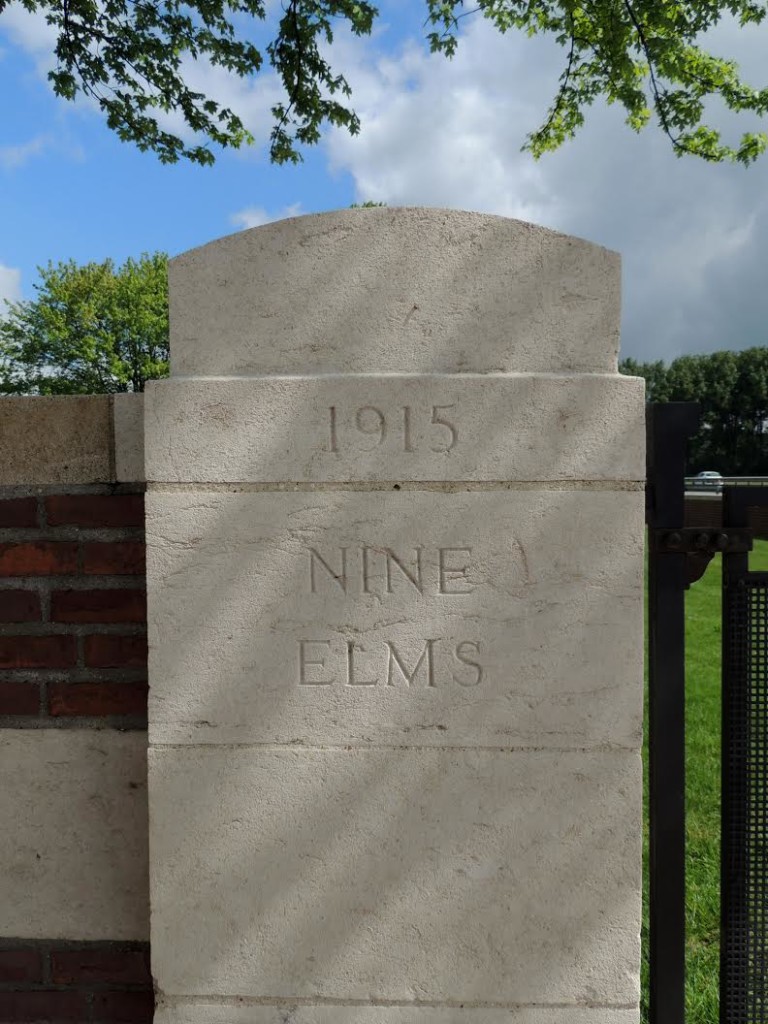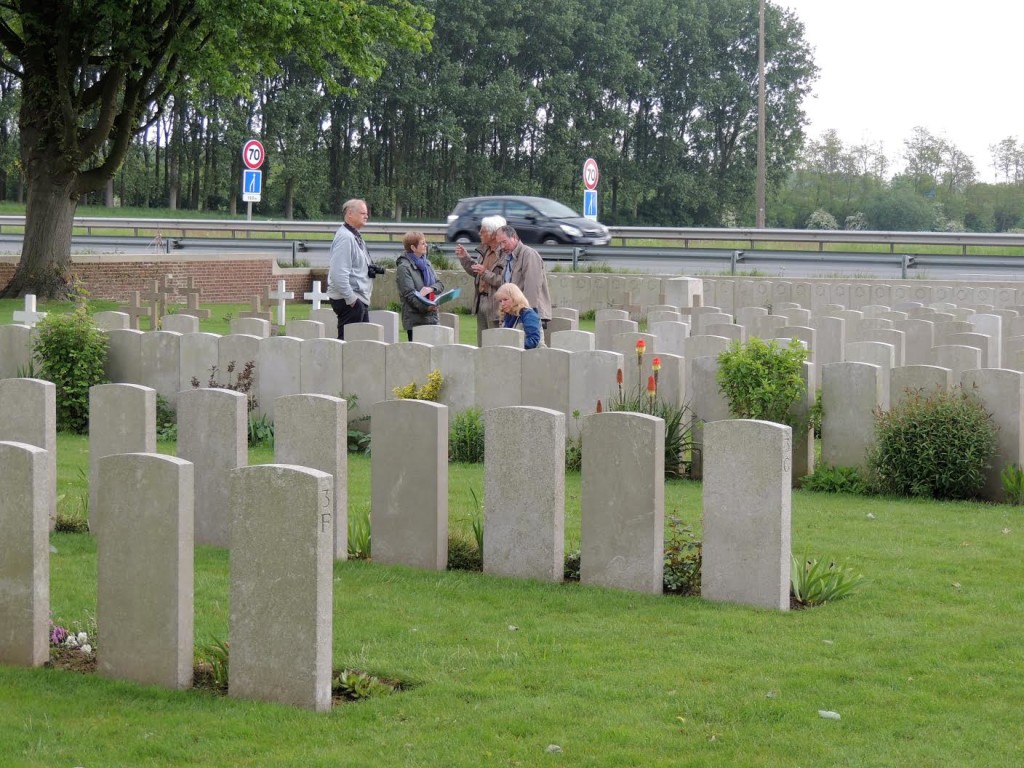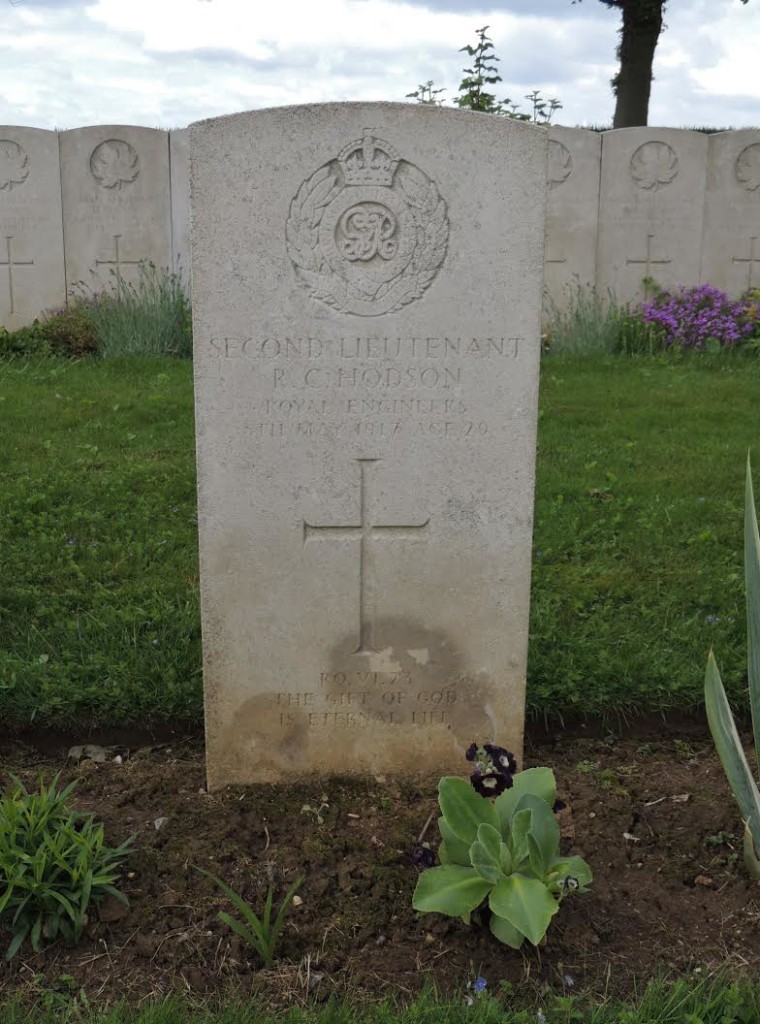Lieutenant Colonel Harry Vivian Robert Hodson
Our two day trip was drawing to a close and so, lunchtime baguettes eaten and the loo in a local café visited, our thoughts turned back to Richard’s grandfather Harry Hodson.
After the battle of Mametz Wood, Harry assumed command of the 14 Royal Welsh Fusiliers on 18 July 1916 and redeployed with the 38 Welsh Division to the Ypres salient on the Yser Canal until June 1917 when he was appointed Officer Commanding the Brigade School. Harry took command of the 1st Battalion the North Staffordshire Regiment on 9 April 1918 to reform and retrain the battalion after it had been virtually wiped out in the area of St Quentin when the Germans first launched the Ludendorff offensive. The battalion was deployed in the Lens area from May to late September until relieved. The regiment was then redeployed to the Cambrai area to take part in the final stages of the war and the battle of the Selle.
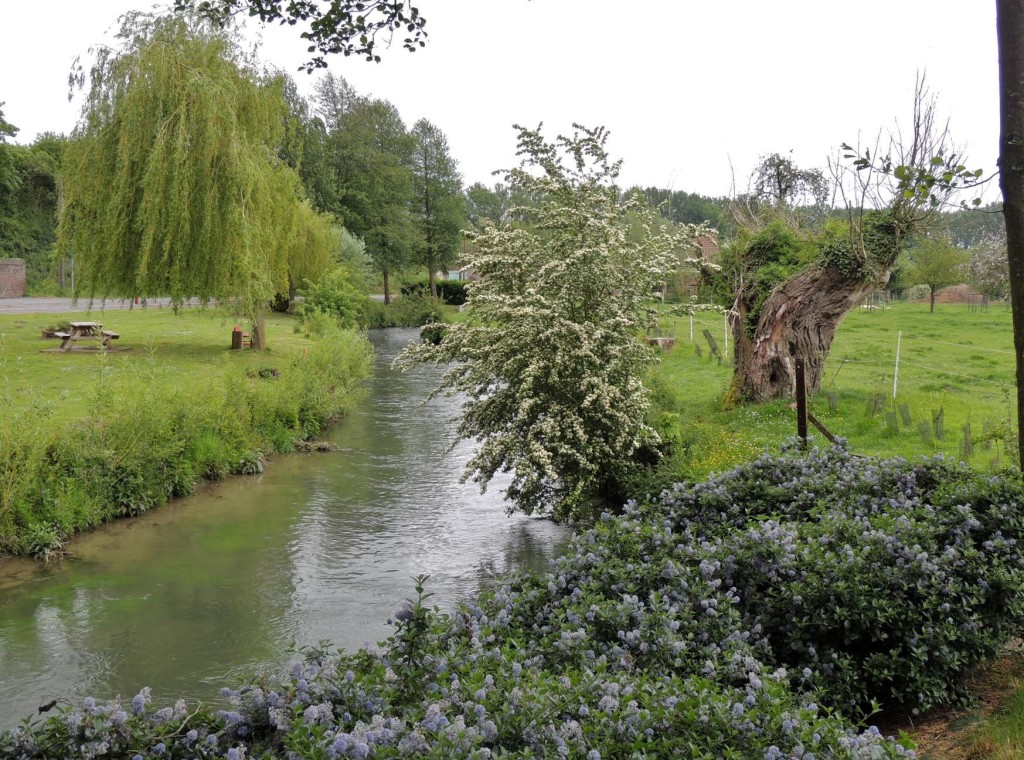
“The peaceful River Selle as it is today”
We drove down a steep hill to find the River Selle which formed the setting of this battle and were rather nonplussed to find a small, tranquil and reed-edged river winding its way in a rather chocolate box way through a pretty village. Not at all Richard’s vision of what the River Selle would be. It was clearly a very different place when Harry’s regiment fought for control of what was a key bridge.
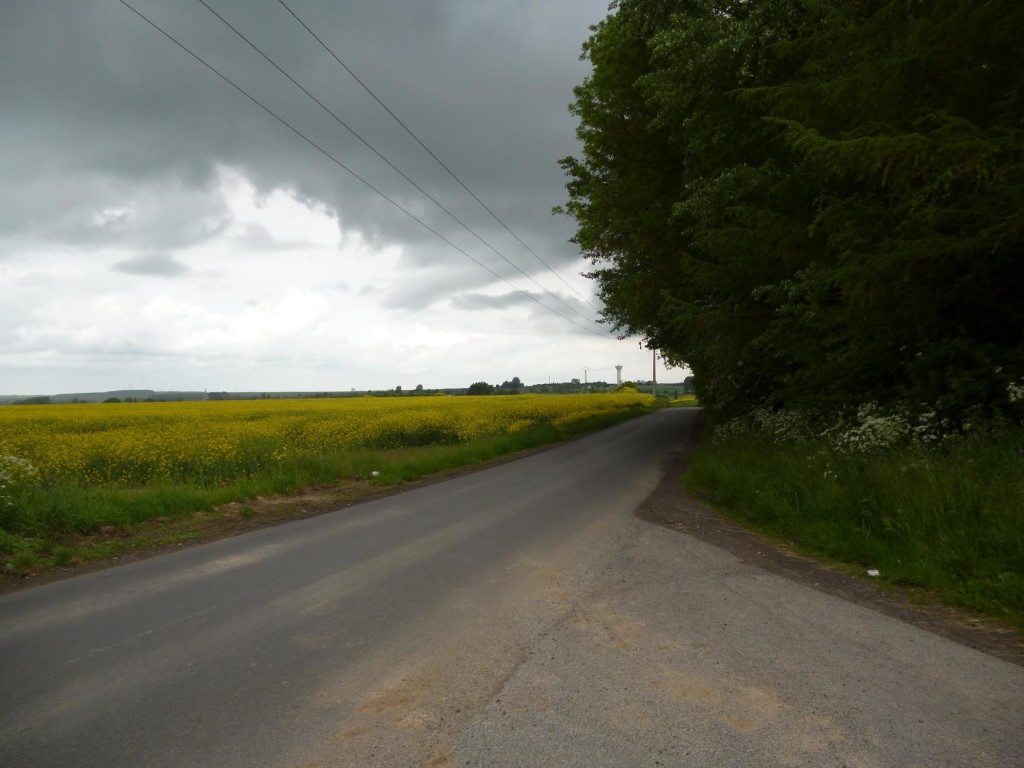 “The landscape above the River Selle where Harry’s battalion fought”
“The landscape above the River Selle where Harry’s battalion fought”
Back up the hill Richard was able to bring the area of the fighting above the village to life for us, having an instinctive grasp for the lie of the land and the direction of the fighting which the rest of us lacked.
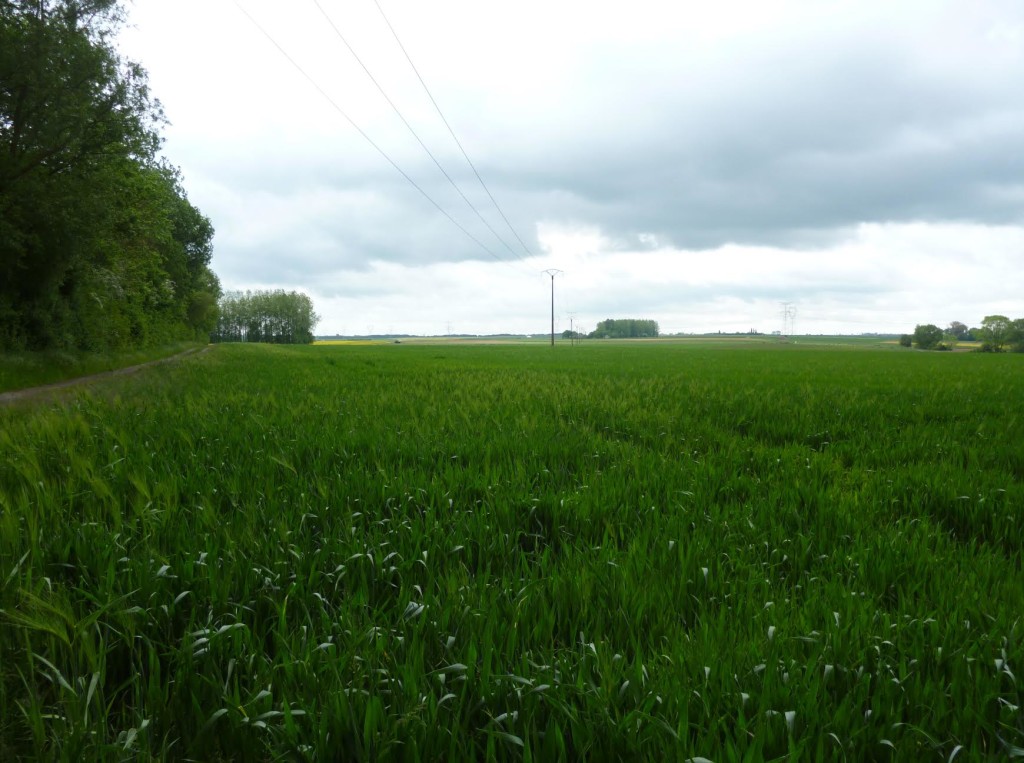
“Dark clouds over the fields above the River Selle”
Harry commanded his battalion in operations from 7 October to clear the enemy from the villages of Awoingt, Cauroir, Cagnoncles, Rieux, Avesnes, St Aubert until he was wounded at 11am on 13 October 2018, very near the end of hostilities. He was twice “Mentioned in Despatches” for gallantry. The war ended before he was again fit for duty and so he survived and returned to his wife and three children, one of them being Robin, Richard’s father. He commanded his regiment again in 1925 and was stationed in Calcutta until 1929. In 1930 he was compulsorily retired due to defence cuts, living to the age of 85.
As we stood on the road trying to visualise the battle raging across the landscape, we thought about how different things could have been if the bullet which hit Harry in the hip had actually killed him. A long life could easily have been cut short as it was for so many thousands who went off to the Somme with such high hopes of serving their country a century ago.
Our time exploring the Somme battlefields was over and we left with just a little more understanding of the experiences of Robert, Walter, Gilbert, Harry and Frederick – only two of whom lived to tell the tale.
They shall grow not old, as we that are left grow old:
Age shall not weary them, nor the years condemn.
At the going down of the sun and in the morning
We will remember them.*
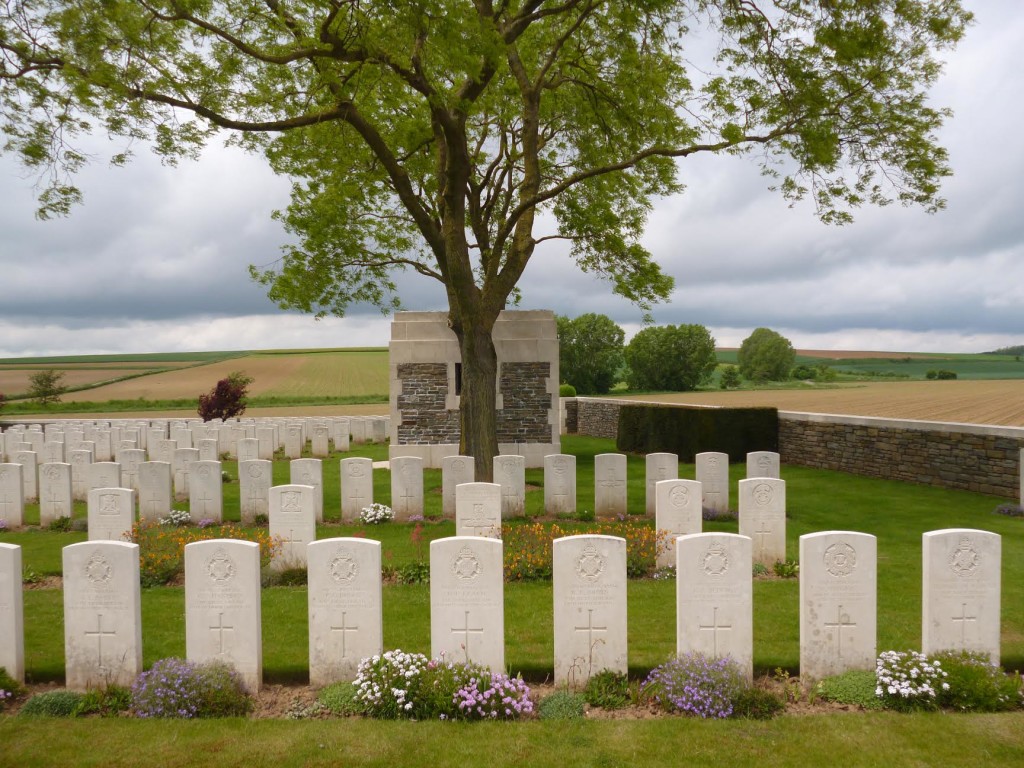 “St Aubert British Military Cemetery – just one more example of the dedication of those looking after these very special memorials all across France and Belgium”
“St Aubert British Military Cemetery – just one more example of the dedication of those looking after these very special memorials all across France and Belgium”
*From “For the Fallen” by Lawrence Binyon
Penny Gerrard
with information & text from Richard Hodson

